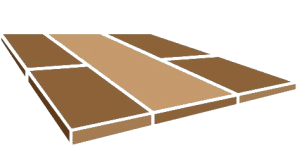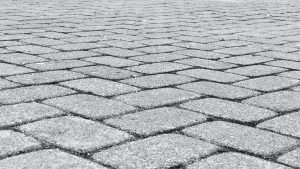Are you dreaming of a stunning patio or walkway but feeling overwhelmed by the installation process? You’re not alone. We at Gilbert Paver Company understand the challenges homeowners face, and this comprehensive guide is here to help. Read on to discover everything you need to know about Paver Installation.
Contents
Why Choose Pavers?
Pavers offer a versatile and durable solution for various outdoor surfaces. They come in different shapes, sizes, and materials, making them perfect for any aesthetic you’re aiming for. Plus, they are easy to maintain and can withstand heavy foot traffic as well as extreme weather conditions.
Another perk is the variety of patterns you can create. Whether it’s a classic herringbone design or something more unique, the sky’s the limit. Now, let’s explore the next steps to ensure your paver installation is a success.
Planning Your Paver Project
Before the first stone is laid, careful planning is crucial. Start by measuring the area where you intend to install the pavers. This helps in estimating the amount of material you’ll need.
Next, consider the purpose of your paver project. Are you building a walkway, a Driveway, or a patio? The intended use will determine the type of pavers you should choose. Planning involves setting a budget, selecting a pattern, and deciding whether you want to include any extra features like retaining walls or steps.
Choosing the Right Paver Material
Different materials offer different benefits. When selecting the best material for your project, you’ll want to consider some essential factors. For instance, **concrete pavers** are affordable and come in various colors and shapes, while **natural stone pavers** offer an elegant, timeless look.
**Brick pavers** are known for their durability and earthy appearance, whereas **porcelain pavers** are slip-resistant and ideal for pool areas. Don’t forget about **rubber pavers**, which are eco-friendly and provide excellent shock absorption.
Preparing the Ground
The foundation is critical for a long-lasting paver installation. Start by clearing the area of any plants, rocks, or debris. Use a shovel or a mechanical tiller to dig out the soil to the recommended depth, usually around 6-8 inches for patios and walkways, and 10-12 inches for driveways.
This extra depth will accommodate the paver, base, and sand layers. Compact the soil with a plate compactor to ensure a solid base for your project. Voila! Your groundwork is set.
Setting the Base Layer
For a sturdy foundation, your base layer should consist of crushed stone or gravel, about 4-6 inches thick. Pour the gravel into the excavated area and spread it evenly. Compact the gravel to enhance its stability using a plate compactor.
Repeat this process until you achieve the desired thickness. Make sure that the base is level, smooth, and well-compacted to avoid any future settlement issues. Once the base layer is ready, top it with a 1-inch layer of coarse sand, which acts as a bed for your pavers.
Installing the Pavers
Now comes the fun part: laying down the pavers. Starting from a corner, place the pavers one by one, ensuring they are tightly fitted together. Use a rubber mallet to gently tap each paver into place, making them level with the ones around them.
Keep the design pattern in mind, so you don’t have to go back and redo sections. Use spacers to maintain uniform gaps between pavers, which will be filled with joint sand later. Congratulations, you’re now laying your dream patio or walkway!
Cutting Pavers
It’s unlikely that all your pavers will fit perfectly within your design, so you’ll need to cut some to size. Use a masonry saw or a chisel and hammer for more manageable adjustments. Make sure to wear safety goggles and gloves for protection.
Measure and mark the paver where the cut should be made. Carefully execute the cut for a seamless look. Double-check your measurements before each cut to avoid mistakes.
Filling the Joints
The next step is to fill the gaps between pavers with polymeric sand. This special type of sand locks the pavers in place while preventing weed growth and insect infestation. Spread the sand evenly across the surface and use a broom to sweep it into the joints.
Lightly mist the area with water to activate the polymer in the sand, which helps it harden. Avoid over-watering as it can wash away the sand. Repeat the sweeping and misting process until joints are fully filled.
Sealing the Pavers
Although sealing pavers is optional, it can help to prolong their lifespan and enhance their appearance. A good sealant protects the pavers from stains, weathering, and fading. The best time to apply a sealant is a few weeks after installation, allowing the sand between the joints to settle.
Apply the sealant evenly using a sprayer or roller. Make sure the pavers are clean and dry before application. A well-sealed paver installation is impressive and easier to maintain.
Maintenance Tips
- Regular Cleaning: Sweep your pavers regularly to remove debris and prevent staining.
- Weed Control: Apply weed killer or pull weeds as soon as you see them sprouting between pavers.
- Address Stains Quickly: Clean up spills immediately to avoid long-term stains.
- Reseal When Necessary: Reapply sealant every 2-3 years to maintain protection and appearance.
- Repair Immediately: Fix any shifted or damaged pavers promptly to avoid further issues.
Conclusion
We hope this ultimate guide has armed you with all the knowledge you need to embark on your paver installation project. Remember, a well-planned and executed installation not only enhances your home’s beauty but also adds value.
For professional assistance, contact Gilbert Paver Company by phone at 480-534-9680 or Request a Free Quote.




